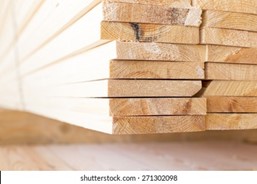As a child, many of you will have played with or seen a sorting ball of various colours and shapes, where you would place the corresponding shape into the ball. Little did you know then, how important such a toy would be, especially when it comes to sorting and stacking in your adult life.
Much of the emphasis has been on preparing the materials to be moved. However, sometimes you will be stacking them for storage. This is particularly true for timber, formwork, and scaffolding. The way in which you stack these materials will have implications on safety and potential damage to a product.
Many of the techniques will be the same regardless of whether you are stacking for movement or storage. For example:
- safe manual handling
- stacking to avoid damage
- stacking to a safe height
- ensuring that stacks are well balanced.
HARRY COMMENT: WITH THE ABOVE BULLET POINTS, PLEASE CREATE A GRAPHIC LIKE THE BELOW.

When stacking materials for storage, there are some strategic considerations you will need to implement. Some of these include:
- Sort materials so that they are:
- easily identified.
- stored in a way which means that they are accessible.
- stored in a logical sequence (think about what you will need first and store it at the front)
- easily retrieved.
- Label materials.
- Record the location of materials.
- Do not stack sheet materials on their edge.
- Stack materials carefully to avoid damage.
- When stacking lengths of timber:
- Stack on an even, level, dry surface
- Stack from longest lengths at the bottom to shortest at the top
- Stack according to type
- Ensure that timber is clean and dry before stacking.
- Stack on bearers
- Insert bearers between rows to allow for ventilation.
- Tarp or cover stacks if vulnerable to weather.
- Ensure that stacks are level.
- Ensure that stacks are even and balanced.
- Ensure that stacks of sheet material are stacked from longest at the bottom to shortest at the top.
- Consider size, type, weight and shape of materials.
- Protect edges when banding.
- Use tarps and pallet wrapping as necessary to protect stacks.
When sorting, stacking, and storing materials, think about the future usability of them. If they are not stored and stacked properly, they are likely to be exposed to permanent damage which can be costly, particularly if the materials then need to be replaced.
There are, however, some strategies you can implement which can result in significant cost savings by reusing materials as well as the obvious environmental benefits.
- Protect materials against physical and water damage.
- Avoid sorting in wet areas.
- Check for damaged materials while you are sorting and dispose of them as per site procedures and environmental procedures.
- Sort materials carefully to avoid damage.
- Sort materials away from access areas to avoid being a hazard to others.
- Take care with pinch bars/hammers etc – use packing to protect vulnerable surfaces.
- Avoid standing on materials.
- Use tarps or drop sheets to protect materials.
- Avoid dropping/knocking materials.
- Take care with banding.
HARRY COMMENT: WITH THE ABOVE BULLET POINTS, PLEASE CREATE A GRAPHIC LIKE THE BELOW.


